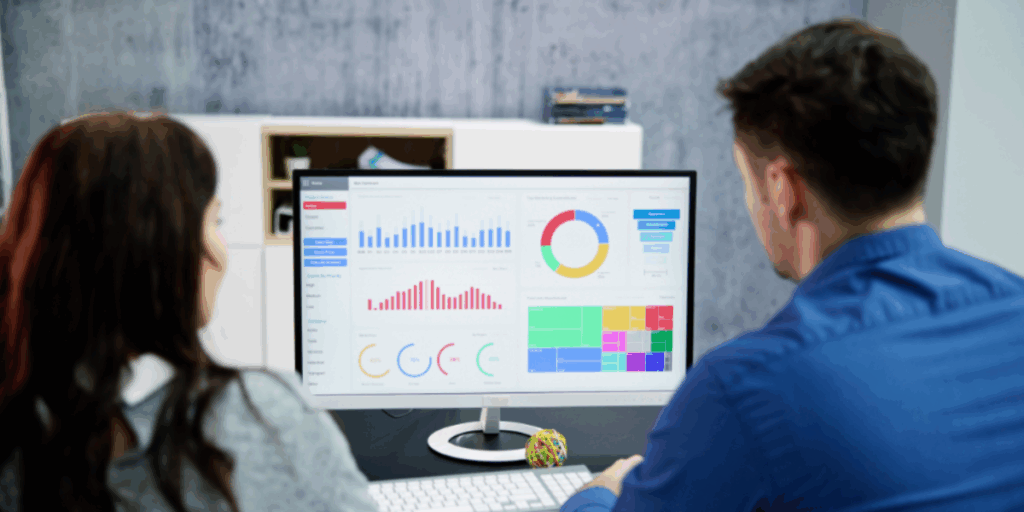Instagram has evolved into more than a photo-sharing app. Today, it’s a sales powerhouse for ecommerce brands. But as competition increases, running profitable Instagram campaigns takes more than creativity. It demands deep analytics, audience precision, and ad strategy expertise.
That’s where an Instagram ads ecommerce agency comes in. Instead of guessing which ads will convert, businesses can rely on experts, this is where an Instagram ads agency steps in—that test, analyze, and optimize every step of the funnel. With rising customer acquisition costs, hiring the right agency can make the difference between flatlining sales and scalable growth.
In this blog, we’ll explore how partnering with an Instagram ads ecommerce agency helps your store stay ahead. From campaign performance and consumer behavior to regional insights and strategic takeaways, this guide gives you the full picture.
Ad Performance on Instagram
Instagram isn’t just a social platform anymore. For eCommerce brands, it has become one of the most powerful paid media channels for performance-driven advertising. With Meta’s ongoing investment in AI targeting, visual-first formats, and seamless in-app shopping experiences, Instagram is driving more conversions than ever before.
Conversion and ROAS Impact
Instagram has become a conversion powerhouse for eCommerce brands. Its visual-first environment and integrated shopping features allow consumers to move from discovery to purchase seamlessly. These built-in tools, combined with Meta’s AI targeting, make it easier to achieve strong performance metrics.
While Instagram’s average click-through rate sits under 1.5%, the platform consistently outperforms traditional ad networks in engagement and sales efficiency. Unlike static display ads, Instagram users interact in a visual and immersive context, reducing friction in the buyer journey. Features like product tags, Instagram Shops, and in-app checkout reduce the number of clicks required to convert, increasing ROAS.
Top-performing campaigns often report returns between 4x and 8x, particularly when ad creatives are customized to specific audience segments. Agencies that specialize in Instagram media buying use detailed audience insights, creative testing, and timing strategies to enhance results. These professionals know how to build funnels that convert, from top-of-funnel awareness to final sale.
Retargeting plays a crucial role in Instagram’s performance advantage. Users who previously engaged with a product are far more likely to convert when served a well-timed retargeting ad. The lifestyle-oriented feed, strong visual recall, and dwell time make Instagram one of the most effective retargeting channels for eCommerce advertisers.
Creative and Format Impact
Ad formats on Instagram aren’t just aesthetic, they directly affect ad performance. From Reels to carousel ads and shoppable Stories, the platform gives eCommerce brands a wide canvas to present their offers in compelling, mobile-friendly ways. The key lies in choosing formats that resonate with user behavior and platform trends.
Short-form video, especially Reels, continues to drive higher engagement compared to static formats. Video’s movement and sound naturally stop the scroll, and Instagram’s algorithm rewards content that keeps users engaged. High-performing campaigns often use fast-paced, mobile-optimized creatives with strong hooks in the first three seconds.
Creative testing is where the real performance gains happen. Agencies that iterate frequently on messaging, visual layout, and offer positioning are better positioned to discover winning formulas. Instead of relying on a single ad concept, successful campaigns use data to scale high performers and retire underperformers quickly.
What separates effective Instagram advertising from wasted spend is agility. Markets shift fast, and Instagram’s culture evolves quickly. The best media buyers continuously analyze audience signals, adapt creative formats, and align messaging with current consumer expectations. This approach keeps campaigns relevant and profitable over time.
Instagram vs Other Channels

When evaluating Instagram’s effectiveness, it’s essential to compare it with other key paid media channels like Facebook, TikTok, and Google. Each platform serves a different stage of the buyer journey, but Instagram continues to stand out for visual discovery, impulse buying, and ROAS in direct-to-consumer (DTC) campaigns.
CTR, CPM, ROAS Benchmarks
When comparing paid channels, click-through rate (CTR), cost-per-thousand impressions (CPM), and return on ad spend (ROAS) are critical benchmarks. Instagram consistently holds its own against platforms like TikTok, Facebook, and Google Shopping, particularly for visually driven eCommerce brands.
Instagram ads typically achieve a CTR between 0.9% and 1.3%, outperforming Facebook’s average of 0.7% to 1%. TikTok boasts a higher CTR in the 1.5% to 2% range, but the quality of traffic is often less purchase-ready, especially for higher-ticket products. Instagram’s CTR advantage lies in its visual-first ad formats and native shopping integrations.
CPM on Instagram ranges from $7 to $12, higher than TikTok’s $3 to $6 but still reasonable compared to platforms like LinkedIn. While TikTok wins on lower CPM, Instagram compensates with higher conversion intent, particularly in direct-to-consumer (DTC) campaigns. For eCommerce brands focused on profitability over impressions, Instagram’s CPM remains justifiable.
ROAS is where Instagram truly shines. Well-optimized campaigns often see returns of 4x to 8x. Facebook averages slightly lower at 3x to 6x. Google Shopping delivers strong results too, between 5x and 9x, thanks to search intent. TikTok’s ROAS is more variable, typically 2x to 5x, heavily influenced by creative quality and offer strength.
Funnel Role and Attribution
Instagram’s impact isn’t limited to a single stage of the buyer journey. It performs well across both upper and mid-funnel, allowing brands to guide users from awareness to conversion in one seamless experience.
Users often first engage with a brand through Reels or Stories, then visit the profile or in-app shop before making a purchase. This makes Instagram more versatile than Google, which primarily dominates bottom-of-funnel conversions through keyword targeting and direct search intent.
TikTok’s strength is in upper-funnel engagement, capturing attention with viral content. However, it often requires more effort in retargeting to drive conversions. Instagram, by contrast, blends discovery and conversion more naturally, thanks to native product tagging, in-app checkout, and dynamic product ads (DPAs).
For eCommerce marketers running multi-channel strategies, Instagram serves as a strong connective layer. When paired with Meta’s AI-driven optimization and full-funnel targeting, it enhances performance across campaigns, supporting both branding and revenue goals in one platform.
How AI Boosts Results
Instagram’s evolution into an AI-driven ad platform has changed the rules for eCommerce marketers. From automated targeting to dynamic creative testing, today’s campaigns are increasingly powered by machine learning. These innovations are not just upgrades, they’re essential tools for competitive performance.
Smarter Targeting at Scale
Instagram now uses machine learning to manage every major aspect of campaign delivery. This includes audience segmentation, bidding, and placement optimization, streamlining the media buying process for eCommerce teams.
Meta’s AI architecture processes thousands of user signals in real time, device data, interests, browsing behavior, and past conversions, to predict which users are most likely to engage and convert. These predictive models allow for more precise, real-time ad placements aligned with purchase intent.
Advantage+ Shopping Campaigns are a strong example of this automation at work. They automatically mix and match creative assets, learning over time which combinations perform best across different placements. Meta reports that brands using Advantage+ see up to 32% lower cost per purchase and 15% higher ROAS compared to manual setups.
This level of optimization significantly reduces the need for manual intervention. Small and mid-sized eCommerce brands can now access enterprise-level efficiency, closing the gap with larger competitors and reducing reliance on big in-house teams.
Automated Creatives and Retargeting
Instagram’s AI capabilities are also transforming creative production. Brands no longer need to create dozens of unique ads manually, dynamic creative tools now do much of the heavy lifting.
One key tool is Dynamic Product Ads (DPAs). These automatically pull products from a synced catalog and retarget users based on recent site activity, such as product views or cart additions. They dynamically update based on inventory and pricing, so users always see relevant and available options.
This approach makes retargeting feel seamless. A customer who browsed sneakers last week might see a carousel today with those exact sneakers plus similar recommendations. Because the content is behaviorally relevant, it performs more like organic discovery than a typical ad.
Meta also offers creative testing tools that auto-rotate formats, headlines, and CTAs. Brands can run variations at scale without producing each one manually. This enables faster iteration and deeper performance insights, both critical in today’s fast-moving commerce environment.
Budget and Performance Guidance
AI is not only streamlining targeting and creative, it’s also helping brands make better budget decisions. Instagram Ads Manager now includes predictive analytics tools that recommend budget allocations based on projected ROAS and campaign momentum.
These recommendations are powered by performance modeling, allowing marketers to identify where to scale and where to cut back. Instead of relying on historical performance or gut instinct, advertisers receive real-time guidance rooted in data science.
This is especially valuable for eCommerce teams managing multiple SKUs or product categories. As demand shifts across campaigns and seasons, AI recommendations help keep budgets aligned with ROI goals.
In effect, AI turns Instagram into more than an ad platform, it becomes a strategic advisor. For modern eCommerce brands, this level of automation and intelligence is no longer optional. It’s a critical driver of scalable growth.
Regional Performance Insights
Instagram may be a global platform, but ad performance varies significantly depending on region. Factors like mobile penetration, cultural content preferences, purchasing behavior, and platform maturity all play a role in shaping campaign outcomes. To scale globally, eCommerce brands need to understand these regional nuances and adapt accordingly.
North America: High Cost, High Returns
Instagram ad performance in North America is shaped by platform saturation, high user expectations, and intense competition. Brands must bring their A-game to achieve returns in this premium yet costly market.
Consumers in the US and Canada are highly ad-aware. They’ve been exposed to a wide range of creatives and expect high-quality visuals, relevance, and strong proof of value. UGC, creator partnerships, and Reels are top-performing formats, particularly in fashion, wellness, tech, and beauty verticals.
While CPCs and CPAs are some of the highest globally, so is the buying intent. Campaigns with clear funnel structure, persuasive storytelling, and time-sensitive CTAs tend to outperform generic ads. Meta reports that carousel ads and dynamic creatives yield stronger ROAS in this region.
Seasonal campaigns are especially effective. Instagram activity spikes during Black Friday, Cyber Monday, and Q4 holidays. For brands that time their promotions and retargeting windows correctly, North America offers high conversion potential despite high CAC.
APAC: Fast Growth, Influencer-Led
The Asia-Pacific (APAC) region is leading global growth on Instagram, with younger users driving engagement and purchase behavior. Mobile-first habits and influencer trust shape a distinct eCommerce environment.
Short-form video dominates here, especially Reels and Stories. Brands targeting Gen Z and young millennials must prioritize visual, snackable content to stay relevant. Influencer-led campaigns often outperform traditional ads, particularly when featuring local voices or micro-creators.
Language and cultural relevance are key. In markets like Indonesia and the Philippines, native-language captions outperform English by up to 20%. Brands that localize both messaging and visuals see stronger engagement and trust.
Beauty, fashion, and electronics are strong verticals across APAC. Cash-on-delivery and regional payment preferences remain common, so checkout flows must match local behaviors. When localized effectively, Instagram ads can deliver scale and ROI quickly in this region.
Europe: Ethical, Language-Sensitive
European Instagram users are privacy-aware and motivated by quality, ethics, and trust. Success here requires compliance with regional regulations and a focus on transparency and sustainability.
In Western Europe, users in countries like Germany, France, and the UK expect premium, well-explained creatives. Brands that highlight product certifications, eco-friendly practices, or fair pricing often gain more traction than those using overly promotional language.
Language preferences vary. English may work in some metros, but localized content often performs better, particularly in France and Germany. Subtitled Reels, region-specific testimonials, and carousel formats featuring product benefits tend to drive better mid-funnel performance.
Southern and Eastern Europe are still growing markets. CPCs are lower, allowing for affordable brand testing and awareness campaigns. Pan-European strategies should include multilingual targeting and regional creative variations to maximize reach and ROI.
Takeaways for Scaling Ads

Working with an ecommerce ads agency helps localize creatives, test faster, and segment by intent. Instagram is no longer just a branding channel. It’s a high-performance ad platform when approached with strategy and precision. From testing creatives to regional adaptation, scaling here means going beyond basic tactics. Below are the key levers to drive stronger ROI and long-term growth.
Creative Localization Wins
Regional relevance is the fastest way to increase engagement and lower CPA. Audiences respond to content that reflects their language, culture, and lifestyle. This goes beyond just translation, tone, visuals, and offers must resonate locally.
Start by mapping your top-performing markets and analyze performance by creative type. A generic ad may work globally, but localized visuals nearly always outperform. Whether it’s featuring local influencers or referencing local trends, these details create the familiarity that drives action.
Adapt your ad journey end-to-end. Ensure landing pages, payment methods, and offers match what’s promised in the creative. Consistency across regions directly impacts conversion rates.
Always Be Testing Creatives
Top brands don’t launch one campaign and hope it scales. They build creative testing engines that deliver fresh variations week after week. This repeatable system ensures ad fatigue is avoided and performance remains consistent.
Test across three core variables: format, message, and hook. Reels vs. Stories, emotional vs. educational, benefit-led vs. trend-led. Shortform video typically performs best, but format isn’t everything, message clarity in the first 2 seconds is key.
Don’t wait for ads to fail before testing. Schedule weekly creative drops, review winners fast, and retire underperformers quickly. Instagram’s algorithm rewards momentum, so the goal is not just good ads, it’s consistent newness.
Segment by Intent, Not Just Demographics
Segmentation is what turns Instagram from a discovery channel into a conversion engine. The most successful campaigns distinguish between cold, warm, and hot audiences, and custom messaging accordingly.
For cold traffic, go broad with interest layering and storytelling-focused content. Think of it as building affinity. For warm audiences, lean into social proof, urgency, and product education. Use DPA, in-app behavior, and catalog events to personalize retargeting.
Avoid repeating the same creative across all segments. Let your funnel tell a story, introducing the product, deepening interest, and then inviting conversion with the right CTA at the right time.
Ready to scale your Instagram ad performance with proven strategies? Rozee Digital uses these insights to craft data-backed, high-ROAS campaigns customized for growth-focused eCommerce brands. Let’s turn your Instagram into a full-funnel revenue driver.
FAQs:
What does an Instagram ads ecommerce agency do?
An Instagram ads ecommerce agency specializes in creating, managing, and optimizing paid campaigns on Instagram for online stores. They use creative strategies, AI tools, and analytics to drive traffic, improve conversion rates, and boost ROAS.
Why should ecommerce brands invest in Instagram advertising?
Instagram is a visually-driven platform ideal for product discovery. Its features like Reels, Shops, and in-app checkout create seamless shopping experiences, making it highly effective for ecommerce growth.
How does an Instagram ads agency help improve ROAS?
Agencies use detailed audience segmentation, creative testing, retargeting strategies, and Meta’s AI tools to deliver campaigns that convert better. This leads to a higher return on ad spend (ROAS) compared to DIY efforts.
What makes Instagram better than other ad platforms for ecommerce?
Instagram combines visual storytelling with direct shopping features. Compared to Facebook, TikTok, or Google, it offers stronger mid-funnel performance, better retargeting, and immersive formats that boost impulse purchases.
How does AI impact Instagram ad performance?
AI powers targeting, creative optimization, and budget allocation. Tools like Advantage+ Shopping Campaigns and Dynamic Product Ads personalize the ad experience, reduce CPA, and improve conversion efficiency.





